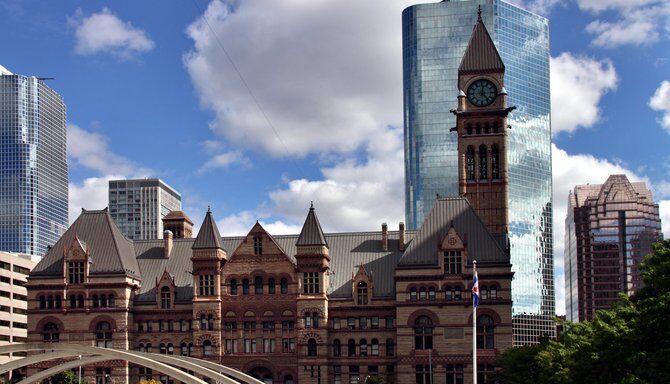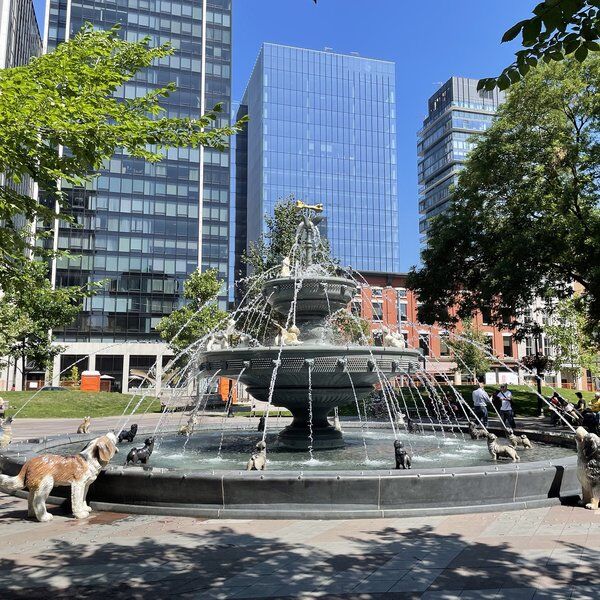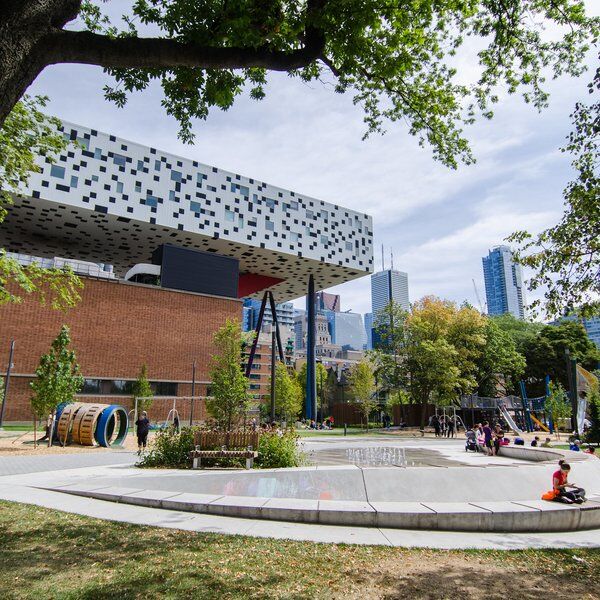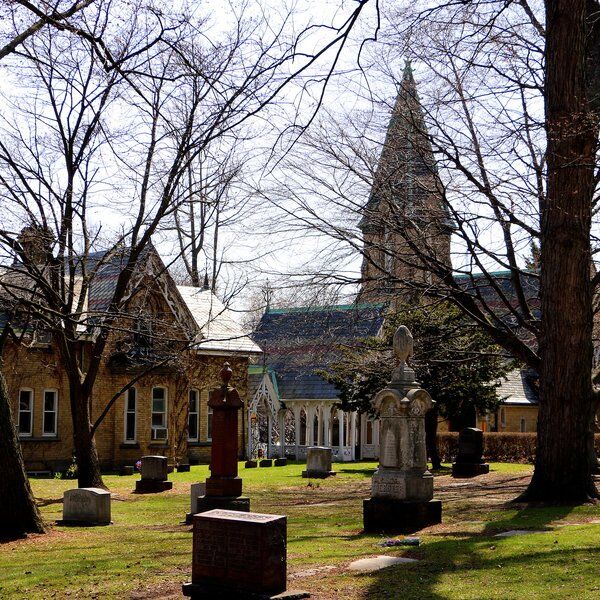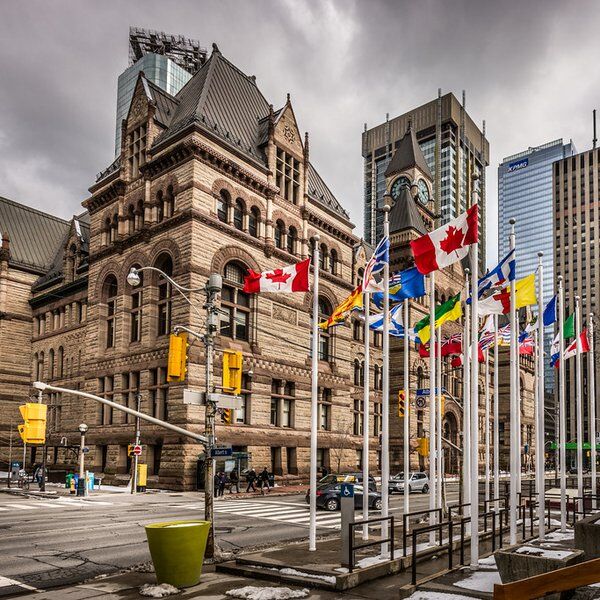Discover Toronto Old City Hall
Located at 60 Queen Street West, Toronto Old City Hall is a prominent structure that has been an integral part of the city’s heritage since 1899. Originally housing the Toronto City Council, Old City Hall’s clock tower, standing at over 103 meters tall, has echoed the sound of its bells across downtown Toronto for more than a century. Despite its age, the building remains a vital hub, now operating as a courthouse for the Ontario Court of Justice, busy with activity. Visitors can easily spot this magnificent Romanesque-style building across from Nathan Phillips Square, right at the corner of Queen and Bay Streets.
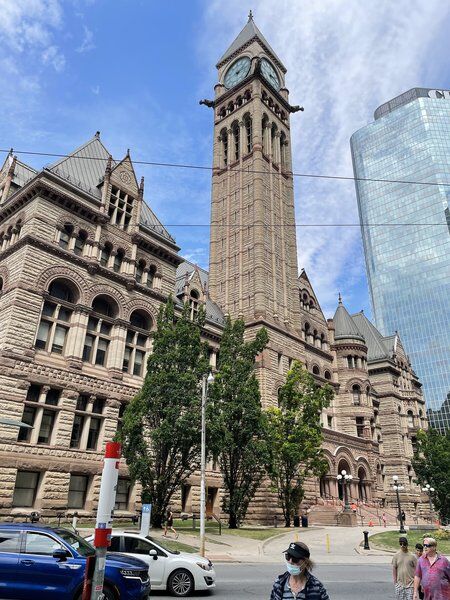
The History of Toronto Old City Hall
Before the imposing structure of Old City Hall stood on Queen Street, Toronto's city officials met in a much humbler setting. When York officially became the City of Toronto in 1834, the first City Hall was a market building at King Street East and Jarvis Street. Though temporary, this early civic hub laid the foundation for the future development of Toronto’s city governance.
By the late 19th century Toronto was experiencing a period of rapid growth. With the increasing population and demands on municipal services, the need for a larger, more functional city hall became clear. In 1885, the city launched an international competition to design a new courthouse, but budget constraints derailed the initial efforts. However, a second competition was held a year later, and Toronto architect Edward James Lennox was chosen to design what would become a dual-purpose building, combining both a courthouse and a city hall.
Construction officially began in 1889, but like many grand projects, it was not without its challenges. Budget overruns, delays, and controversies plagued the process, and what was initially expected to cost $200,000 ended up surpassing $2.5 million—an astronomical amount for the time. Despite these setbacks, the Old City Hall finally opened its doors in 1899, standing as the largest building in Toronto and one of the largest civic buildings in North America.

The Toronto Old City Hall Architect
Edward James Lennox, the architect behind Toronto’s Old City Hall, was known for his influence in shaping the city’s architectural landscape. His work on Old City Hall showcases his mastery of the Richardsonian Romanesque style, a movement named after American architect Henry Hobson Richardson.
The Romanesque Revival style, which originated in Europe during the 11th and 12th centuries, is characterized by thick stone walls, round arches, and heavy masonry—all of which are evident in Old City Hall. Lennox, inspired by Henry Hobson Richardson, incorporated dormer windows and varied stone colours to craft a building that feels both ancient and modern.
In a defiant act of self-recognition, Lennox, who faced criticism from city councilors due to cost overruns, had his name inscribed in corbels beneath the upper eaves of the building.
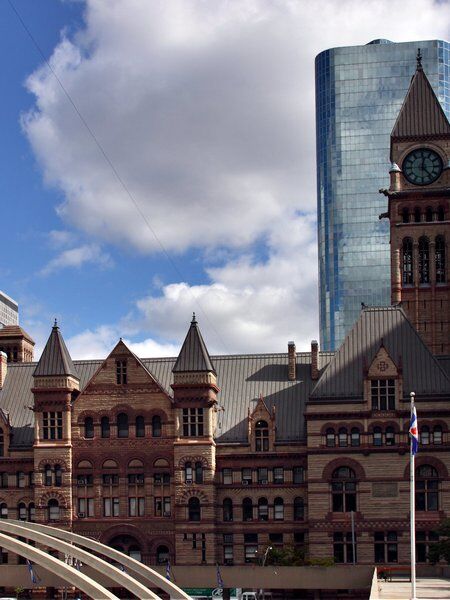
Toronto Old City Hall Design and Architecture
The building itself was constructed using locally sourced materials, including two types of sandstone. The reddish-brown sandstone, sourced from Credit Valley, and a contrasting darker shade from New Brunswick, give the building its rich, layered appearance. These materials form the basis of the building’s texture and contribute to the sense of mass and grandeur that define the Romanesque Revival style.
Other elements of the exterior include triple-arched entrances, steep hipped roofs with copper trimmings, and large, arched windows. Together, these features create a harmonious, yet imposing façade that represents both the craftsmanship and vision that went into its design.
The Clock Tower and Bells
A key highlight of the exterior is the off-center clock tower, standing 103.6 meters tall it is a visual anchor for Bay Street. At its peak, the tower was the tallest structure in Canada for 18 years. The clock, crafted by Gillett & Johnston in England, was manually operated until the mid-20th century before being automated. Inside the clock room, three bells chime on the quarter hour, with a larger "bourdon" bell striking on the hour.
The tower is decorated with whimsy-inducing grotesques, including gargoyles and stone caricatures. According to legend, some of these grotesques were sculpted as caricatures of city councilors who opposed Lennox, with the architect even sneaking in his own likeness among the faces. In 2002, bronze casts of the original gargoyles were reinstalled after weather damage led to their removal decades earlier, restoring the clock tower to its full gothic glory.
Although the clock tower is off-center, Lennox achieved a remarkable balance in the building’s design by carefully distributing elements throughout the structure. For instance, the east and west pavilions are similar in shape but distinct in design, creating a visual symmetry. The architect also employed grouped columns to emphasize window openings, and a combination of circular and rectangular towers to provide visual interest.

The Interior
Stepping inside Old City Hall, visitors are greeted by an opulent two-story entrance hall and a grand staircase, with its marble steps and intricate bronze and iron railings, which immediately grasps attention. On the walls above, the space is graced by Robert McCausland's massive stained-glass window, “The Union of Commerce and Industry,” a tribute to Toronto’s economic rise.
In keeping with the building's Romanesque Revival style, the interior features intricate plaster moldings, columns with plaster capitals, and finely crafted woodwork. Skilled craftsmen from across Toronto contributed to the interior design, including artist George Agnew Reid, who painted murals that depict scenes from Toronto's early history. The foyer is adorned with ornate detailing such as mosaic floors, doorknobs with the city’s crest, and wrought-iron grotesques that echo the building’s exterior theme.
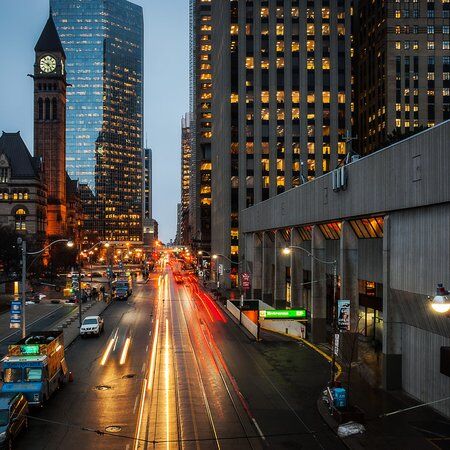
The New Toronto City Hall
Accommodating a Growing City
By the mid-20th century, as Toronto continued to grow, the Old City Hall began to struggle with the demands of the city’s expanding municipal government. The push for a new city hall began as early as 1943, with several proposed designs rejected by both city officials and the public. A pivotal moment came in 1956 when Mayor Nathan Phillips spearheaded an international competition for a new design. This bold decision culminated in the selection of Finnish architect Viljo Revell's unique, futuristic vision, chosen from over 500 entries.
Revell’s design faced significant backlash. Many felt it was too radical for the time. Some of the world’s leading architects, like Frank Lloyd Wright and Walter Gropius, criticized early proposals for being either too conservative or lacking modern flair. However, once completed in 1965, the new City Hall became an iconic landmark, celebrated for its cutting-edge design and representation of a forward-looking Toronto.
Preserving The Toronto Old City Hall
In 1965, when the modern Toronto City Hall was completed across the street, Old City Hall’s future became uncertain. Plans were put forward to demolish the building to make way for the Eaton Centre retail complex. These proposals, which would have left only the clock tower as a monument, sparked public outrage. Preservationists and concerned citizens, led by the “Friends of Old City Hall” group, successfully campaigned to save the building, ensuring its preservation as a key part of Toronto’s heritage.
In 1989, Old City Hall was declared a National Historic Site of Canada, cementing its status as one of the country’s most important architectural landmarks. Over the years, the building has undergone several restorations, including a $77 million renovation to its exterior and clock tower in 2005.
Key Features of the New City Hall
The Toronto New City Hall stands out with its two curved towers, which rise to different heights, cradling the circular council chamber in the center. Its bold, modernist aesthetic was groundbreaking in the 1960s and remains a defining feature of Toronto's architectural landscape. The structure was officially opened to the public on September 13, 1965, in a grand ceremony attended by the Prime Minister Lester B. Pearson.
In front of the New City Hall lies Nathan Phillips Square, a busy public space and host to many of Toronto’s significant events, such as New Year's Eve celebrations and the Cavalcade of Lights. The square’s design, which includes a reflecting pool and striking concrete arches, was part of Revell’s original vision. Today, it acts as a central gathering place.

Haunting Tales from Toronto Old City Hall
Toronto's Old City Hall has long been the subject of ghostly rumors, with Courtroom 33 at the heart of these tales. It's believed that the spirits of the last two men sentenced to capital punishment in Canada in 1962 may still linger there.
Other unsettling experiences include judges feeling their robes being tugged, unexplained footsteps in the rear stairwell, and eerie moans from the building’s cellar, once used to hold prisoners.
Visiting Toronto Old City Hall
Though the New City Hall is now the seat of municipal government, Old City Hall is still operational as a courthouse. It also continues to attract tourists from around the world, who come to admire its more impressive features such as the iconic clock tower, intricate stone carvings, and sweeping grand staircase inside. Guided tours of the site often focus on both its civic history and its more mysterious, haunted tales.
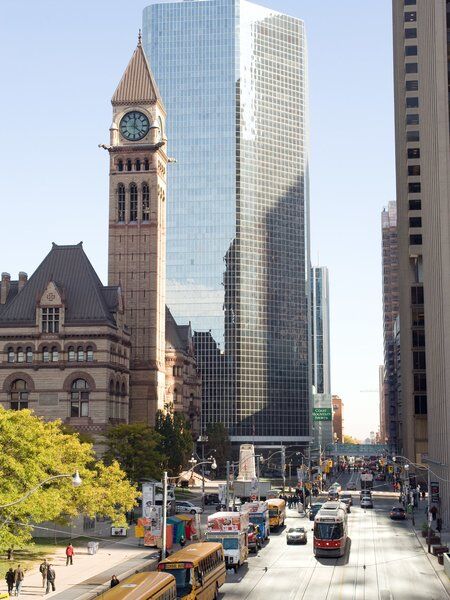
Explore Beyond the Toronto Old City Hall with CityDays
While Toronto Old City Hall provides a unique glimpse into Toronto's past, there are other unique historical aspects to discover in and around the city. If you’re interested in exploring these pockets of history we think you will enjoy one of our CityDays Treasure Hunts in Toronto and in particular, the Old Town Hunt.
Our urban adventures bring the secrets of Toronto to life in a fun and interactive way, so you can uncover the history of the city whilst exploring its often overlooked places of interest such as historic marketplaces and an intriguing fountain.
Along the way, you and your teammates will solve puzzles and clues that interact with the streets themselves to unlock fascinating facts as well as uncover great cafes, pubs, and plenty of surprises.
The Old Town Hunt is an ideal trail for locals, visitors and anyone looking to make the most of this unique and fascinating area. We think you’ll love it but for more information on this tour, and our other Toronto adventures click here: Toronto Urban Adventures | CityDays.
